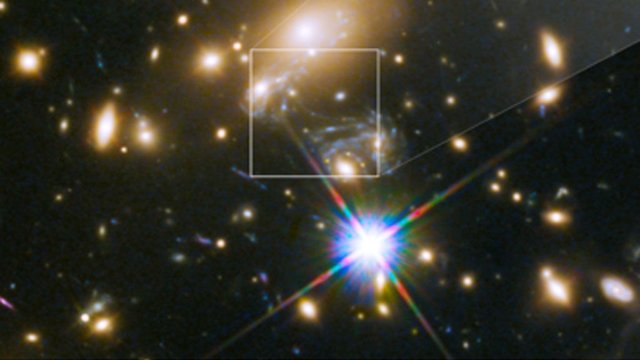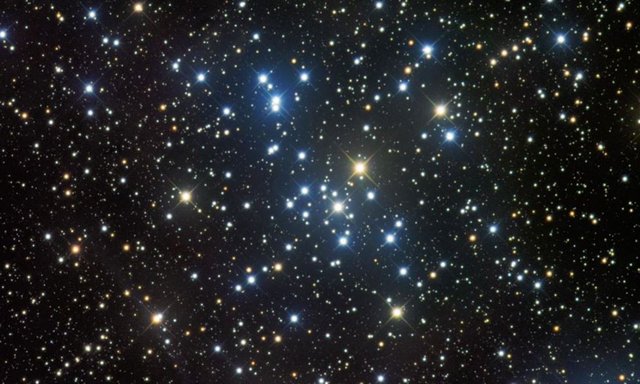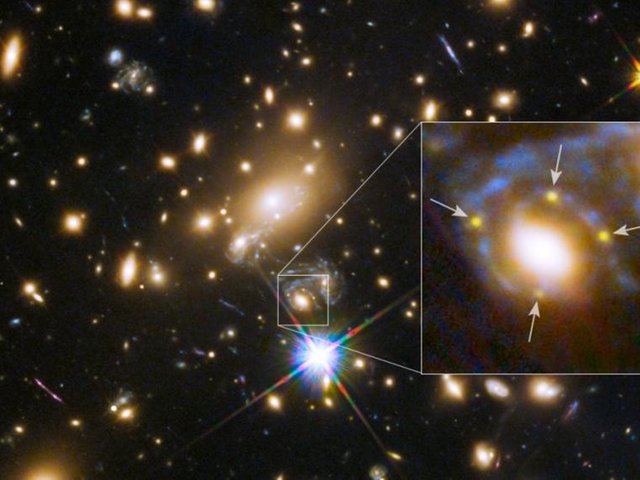Icarus Star - The big blue star - Photographed by the Hubble Space Telescope
Icarus Star:
It is called MACS J1149 + 2223 Lensed Star 1, but it has been nicknamed Icarus, in honor of the Greek mythological character who flew so close to the Sun that the wax of his wings melted. It is located 9 billion light years from Earth and is blue.

According to a study published in the journal Nature Astronomy, a group of astronomers from NASA and the University of Minnesota, United States, observed with the Hubble Space Telescope the galaxy cluster MACS J1149 + 2223, 5 billion light-years away. , and noticed a flickering light in the lower part of the image. The team, led by researcher Patrick Kelly, named the blue star "Icarus" because its brightness was extended 2,000 times by the gravity of the aforementioned cluster of galaxies.
This gravity reduced the space-time to magnify the image of Icarus, a phenomenon known as gravitational lens, in which an object increases the light of the cosmic objects located directly behind them.
The study's lead author, astrophysicist Patrick Kelly, told Reuters: "Now we can study in detail how the universe was and specifically how the stars evolved and what their nature was, almost from the beginning of the universe and the first generations of stars. "

However, thanks to a gravitational lens generated by a cluster of galaxies, astronomers have been able to amplify its brightness and finally detect it.
This finding, according to the magazine where it was published, is particularly interesting because individual stars, unlike galaxies, are difficult to detect due to their dim light. In addition, the discovery of Icarus is also important for researchers studying dark matter, because its interaction with matter has a pronounced effect on the pattern of magnified stars.
"It is a huge blue star whose photons have taken 9 billion light years to reach Earth, which is equivalent to 70% of the universe's age, but since it is expanding, the star is now 14,000 millions of light years ", explains Pablo Pérez González, belonging to one of the Spanish institutions that participated in the discovery.

http://www.bbc.com/mundo/noticias-43628594
http://www.eltiempo.com/vida/ciencia/icaro-la-estrella-mas-lejana-a-la-tierra-200604
https://www.scoopnest.com/es/s/%C3%8Dcaro/famosos/
http://planoinformativo.com/582680/icaro-la-estrella-mas-lejana-jamas-vista-internacionales
Hi @carrizmex parts of this article have been cut and paste from existing articles on the internet, then run through a translator. There are 2 problems with this.